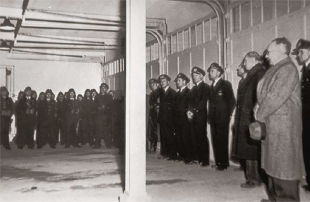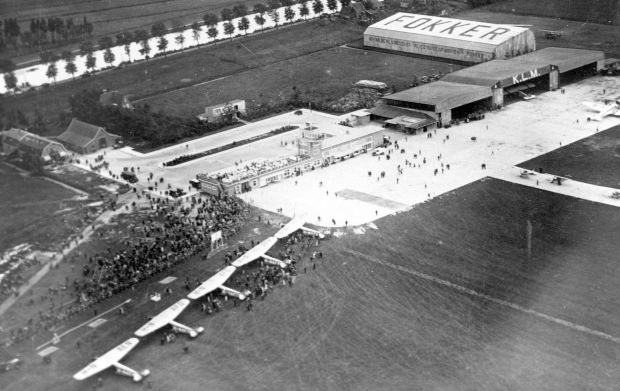What's in a name? All about our street names (4)
Streets, roads and squares: they all need to have names, at Schiphol too. How are you supposed to find your way otherwise? Some are wide avenues, others are a bit hidden behind rows of offices, but they often tell an interesting story. A story we're proud of. Here's part 4 of our series about street names.
Fokker (Street)
Anthony Fokker, born in 1890 in the former Dutch East Indies, first put himself on the map in September 1911 by flying around the Haarlem Grote or Church of St. Bavo in the Spin he designed and built himself. Barely a year later, he set up his first aircraft factory. The Dutch army wasn't interested in his aircraft, however, and so the young entrepreneur felt compelled to cooperate with Germany.
Only after the end of the First World War does Anthony return to the Netherlands, where he puts a factory in Amsterdam North into operation. The aircraft assembled there are taken by deck barge to a very young Schiphol, where they are completed.
The ambitious Anthony leaves for the United States in the mid-1920s, where he continues building up his company, which for a time could even call itself the largest aircraft manufacturer in the world. This slowly came to an end from the 1930s onwards due to the rise of metal aircraft and the recession. The Flying Dutchman, as Anthony was also known, dies shortly before the Second World War because of an infection after an operation on his sinuses.
Koolhaven (Lane)
Although Fokker's flight in his Spin makes the headlines, he is certainly not the first Dutchman to fly successfully above our country. Contemporary and fellow aviation pioneer Frits Koolhaven (Bloemendaal, 1886) took to the skies in March 1911 in his Heidevogel, an adapted version of a plane made by French manufacturer Farman. Fun fact: he took a passenger with him, a man called Jan Hilgers. And that just happens to be the very first Dutch person to fly above our country, on 29 July 1910.
Just like Fokker, Frits is crazy about technology in general and aviation in particular. But while his contemporary and later competitor worked in the German aircraft industry during the First World War, Koolhoven ended up in England. Once back in the Netherlands, Frits starts his own aircraft factory in Rotterdam. It proved a success; at its peak he employed more than a thousand staff.
When his factory was completely destroyed during the bombings of 10 May 1940, Frits retreated to his home on Kaageiland. He died shortly after the war in 1946 of a stroke. Attempts are made to restart the factory, but to no avail. Bankruptcy followed in 1956 and the employees transferred to (of all people) his competitor Fokker.
Read the previous blogs
-
75 years of the Schiphol Fire Brigade
Published on:Where firefighting at Schiphol once involved little more than a sandpit and a few hand pumps, today a professional organisation is on hand 24/7 to keep us safe.

-
Is a filled bottle allowed through security?
Published on:You’re flying from Schiphol and have arrived at airport security check with a filled bottle. But what about those liquids again? Can you take it with you?

-
Holiday packing list
Published on:What do you take with you on holiday and on the plane? With this baggage checklist, you'll know for sure what's allowed in your suitcase and your hand baggage.




